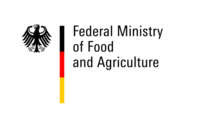Topics for the conference are:
1. Innovative approaches in GHG monitoring and MR
What are new innovative approaches in better monitoring of GHG emissions and how can MRV options be integrated internationally?
a. Developing improved methodologies for national GHG reporting
b. Integrating new measures and regional scales in monitoring
c. GHG calculators for the farm level: experiences and perspectives
2. Mitigation potential
What are innovative measures to mitigate GHG emissions in livestock, cropland, rice production and carbon rich-ecosystems? How can intelligent land use management contribute to less GHG emissions? What is the mitigation potential on the regional, national and global scale of new and innovative action and measures?
a. Livestock and grassland management
b. Rice and Cropland
c. Land-use, land use management and carbon rich ecosystems
d. Soil carbon sequestration, agroforestry
3. Cost and implementation
How can cost-effective GHG measures be integrated and implemented? What are current best practice instruments to integrate GHG emissions by agriculture in national NDCs and how are they implemented? What are innovative integrative approaches with multiple benefits/ win-win options that can be transferred to other regions? What are the barriers to the uptake of mitigation options?
a. Scientific evaluation of national climate protection plans and future pathways
b. Economic analysis of GHG emissions policies / marginal abatement cost curves
c. Adoption rates, potentials and barriers/ win-win solutions: integrative approaches with multiple benefits
4. Global challenges and policies
What are possible policy design and implementation options from scientific point of view? What are the challenges in mitigation regarding food security and other political priorities (natural resources management and biodiversity) and how can solutions look like?
a. Mitigation and food security; Consumption; simultaneously addressing consumption and production
b. Quantification of leakage effects and global implications/ Bio-economy/ Circular economy
c. Options and challenges for supply chains and trade
